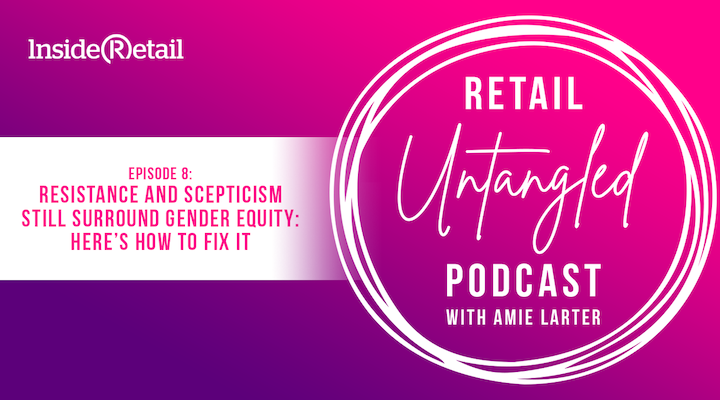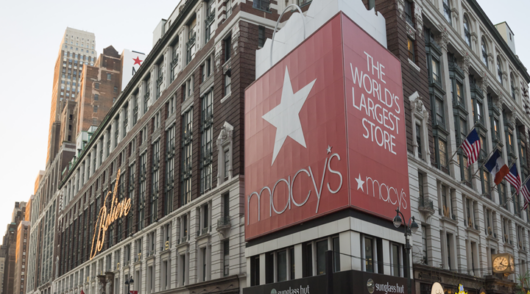Across Australia there is a gulf of nearly 30 per cent between the annual taxable incomes of men and women – yet Federal Government data shows 30 per cent of men do not believe that gender equity is a problem.
Lisa Sweeney, a leadership mentor, executive coach and CEO of the consultancy Business in Heels, believes figures like that highlight a disparity between the discussion around gender equity among Australian businesses and the actual implementation of material action.
“Some organisations are doing some really meaningful change, but a lot of it is just about lip service,” says Sweeney, who spoke with Inside Retail’s Amie Larter in the latest of our Retail Untangled series, where we quiz industry leaders about current issues.
“I think it comes down to time and money. A lot of organisations… feel that lip service is easier to do and we see that often with International Women’s Day where there are great events and women talk about getting more equality – yet the decision makers aren’t even in the room.”
It is that environment that prompted Sweeney and her team at Business In Heels to set up the Gender Equity Awards.
“We got sick of the talkfest and wanted to actually do something a little bit more meaningful.”
Now in their second year, the awards are highlighting progress by companies in areas such as parental leave, reducing the gender connotation of primary care versus secondary care, and implementing policies on support or leave for menopause, menstruation, domestic violence, IVF and pet bereavement.
Ultimately, she says, the awards are about supporting companies that develop solutions that recognise people’s differences and offer solutions to help them.
Resistance to change can be a significant hurdle, but Sweeney believes there are ways organisations can effectively overcome the “resistance and scepticism” surrounding gender equity, despite the history of “all talk and no action”.
“I think a lot of it comes back to everybody starting at different levels. It’s your upbringing, it’s your biases, it’s your culture, it’s your religion. So everyone’s coming from different perspectives and I guess it becomes the responsibility of the organisation to create a culture that then has normalised stories, a common history and a baseline that gives people a sense of belonging.”
But many organisations struggle to create that sort of culture and deal with biases, often ingrained.
“Many people feel that by empowering women, they are giving something up. Until we can address that, people are going to feel they are being adversely affected because women are being empowered.
“Yet, when you look at all the business cases everywhere, more diversity, better decision making is proven to make a more profitable company. So quite often by empowering more women, we create a bigger pie for everybody.”
Diversity in retail
Given women are responsible for three in every four dollars spent in retail, brands should understand the need to embrace gender equality and get female consumers on-side.
Sweeney says retail is a diverse industry. While fashion is heavily weighted towards women and often run by women, it’s a different story in other categories. Toys, for example, is weighted towards men and run by men – as is a lot of the FMCG industry.
“So, there are pockets within retail that are very different and very diverse. Because there is still a war for talent, some of the biggest organisations with the funding to put behind it are at the forefront of gender equality. But we’re also seeing some of the smaller, more exciting retailers like Mecca leapfrogging out with incredible cultures and creating these really exciting environments for people to work in.”
Calling it out
At a corporate level, leadership can play a crucial role in shaping organisational culture. Sweeney says storytelling can be a key strategy because after setting the vision and policies, often it is by sharing practical examples of things people do that are wrong that gets the message through. Leadership should be brave enough to pull somebody up at the time they speak or act inappropriately. She cites an example of a man telling a female at a cafe she doesn’t need sugar “because you are sweet enough”.
“In the past, you would never call that out in public. One of the things that I’ve learned about gender equity, diversity and inclusion, is that by not pulling it up in public, you’re condoning the actions.”
Quotas and tokenism
Sweeney also talked about the discussion surrounding gender quotas in the selection of professionals or board members. One opinion is that discussing quotas is needed to jog people out of their apathy.
“In some cases, quotas have worked effectively,” says Sweeney. “But quite often, the women that have been promoted, become disillusioned and feel like they’re the token woman. And quite often, male colleagues discount them because… ‘you’re just a token female,’ right? ‘You’re here just to make up the numbers rather than having anything to add value’.”
In those cases, she says goals are sometimes a better option. “A lot of companies at the moment are working to the 40, 40, 20 as a goal [where 40 per cent are male, 40 per cent female, and the 20 per cent flexible]. Sometimes it means you have to totally change the way you recruit to get that rolling.”
In retail, she sees an issue with a lot of women not stepping into roles with responsibility for profit & loss, a prerequisite to an eventual CEO role, instead, taking marketing or human resources positions. Sweeney advocates mentoring and sponsoring women into P&L-related roles to learn from those who have gone before them and be better prepared to aspire to become a CEO or MD.
Change need not come from the top
Sweeney believes employees can often impact change in companies that might not be embracing gender diversity. The initiative has got to come from somewhere, she says.
“If it is not the leader and you’re part of an organisation, make your voices heard about this to create action. If you are an employee in a company that’s not doing much, perhaps start an employee group of like-minded people.”
While gathering internal peer support may still need some senior leadership sign-off, it can help start to create a safe environment for people who might be feeling marginalised.
If the company is not changing, staff might be able to get involved in some of this awareness building outside the company, learning what good practices are.
“We run mentor mornings around lots of different locations so people can come along and get exposure to other organisations and potentially take ideas back to the table on their own because change doesn’t necessarily have to come from the top down.
“Women need to make an effort to be visible, and to be inclusive – it goes both ways here. It’s about creating safe, inclusive environments.”






